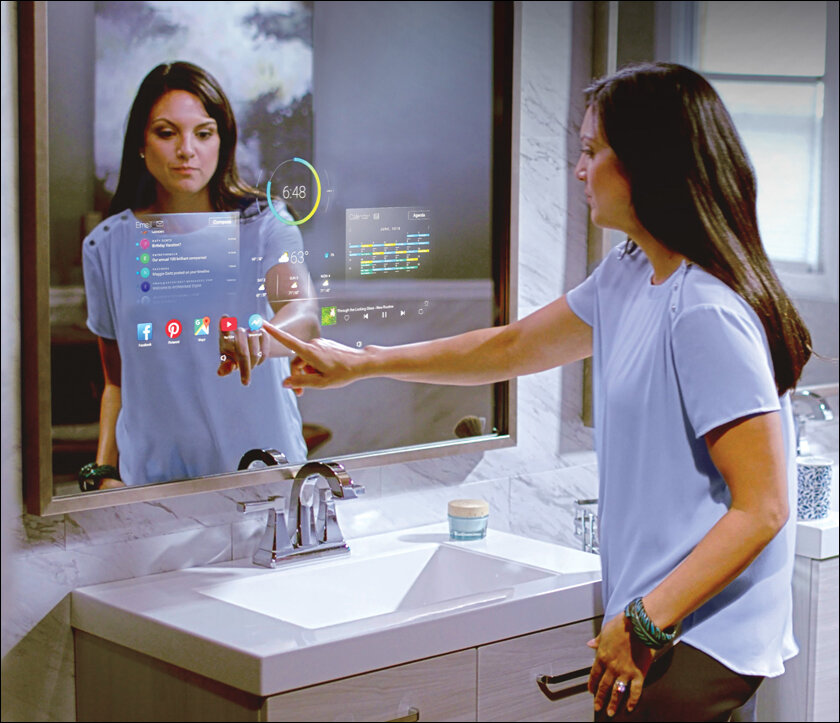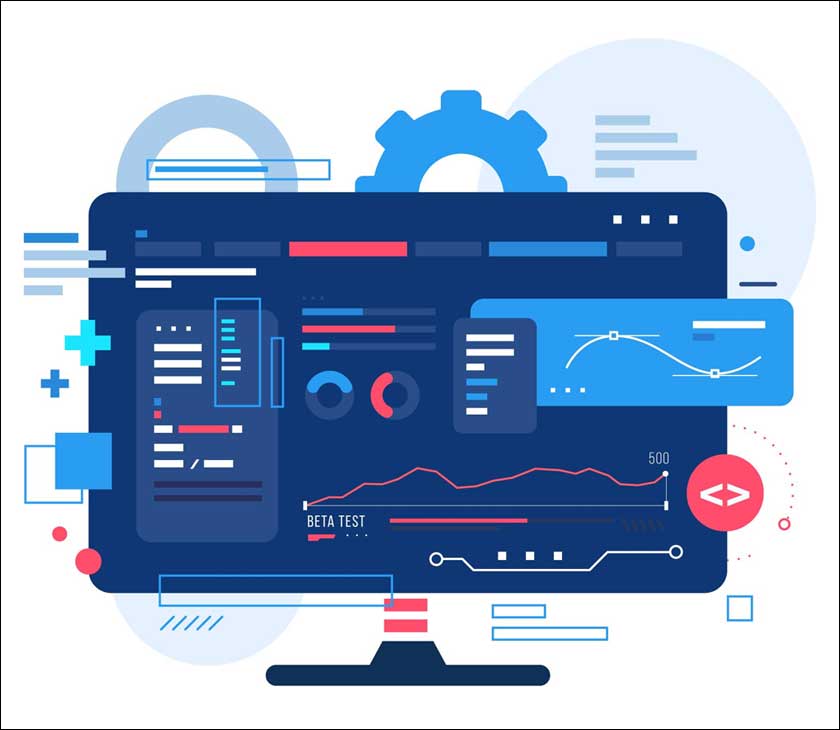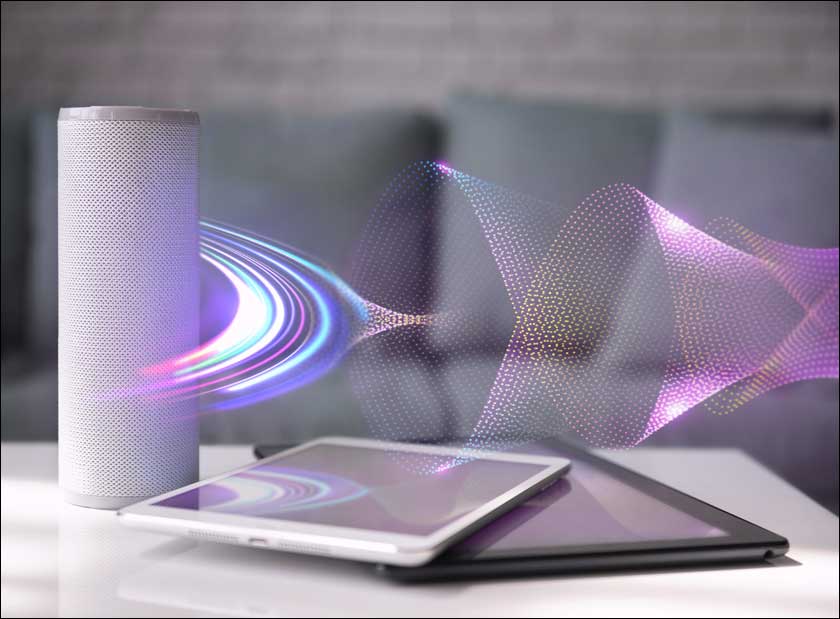As Ambient computing develops, the technology will weave itself seamlessly into the background of our lives, working hard to further improve our safety, comfort, and even personal fulfilment.
Recall a scene from a spy movie in which everything is bugged? Turns out, the future of tech isn’t about flashy gadgets everyone ogles over, but a subtler, more “in the shadows” approach-ambient computing and seamless integration.
Suppose, instead of hearing a loud alarm, you wake up to a soft morning glow coming from your walls. The instant you get out of bed, your coffee is perfectly brewed to your preference. It sounds like something from the mansion of a billionaire, doesn’t it? incorrect! Unbelievably, this future is already here, and it’s meant to simplify your life, not transform you into James Bond (though a morning espresso martini might still be a good idea).
Now think of ambient computing as the technology that hangs out in the background, and once in a while, it will become part of the furniture in your home. So no more bulky desktops or arcane interfaces. These intelligent systems get to know your behaviour and make tiny changes to your everyday routine. Think of it as having a virtual butler who anticipates your needs-from smart thermostats that adjust the temperature to perfection to voice assistants that effortlessly set the ambiance with a casual “Hey Google, create some atmosphere.”
This is the envisioned future of technology: Seamless integration into every aspect of our lives, from the homes we live in to the clothing we wear. This concept has since been popularised by Mark Weiser, a renowned leader in the IT sphere, and thereafter named “ubiquitous computing,” or more popularly, ambient computing. We will break down these small but powerful changes and discover how they are transforming technology and making our everyday activities even better.
So what is Ambient Computing?
In a nutshell, ambient computing refers to technical components that are creatively and innovatively integrated into our environment, helping us to enjoy life without having to interact with the systems in any way. Imagine a situation in which smart mirrors in your home analyse your looks and offer appropriate clothes along with your schedule, weather conditions, and personal preferences. These mirrors come with cameras and AI algorithms that silently help you choose the right attire for various events, such as a casual outing or a formal one. Such a harmonisation of technology into daily items allows them to turn into knowledgeable helpers who run their appointed tasks without bothering the user, eventually making his or her life easier.

Why “Ambient”?
Ambient computing is called after the word “ambience,” which means the inherent nature and emotion of a surrounding environment. In the technological sense, “ambience” means a subtlety and unattainability that adds to the given environment without seizing the entire atmosphere. Just as background music in a restaurant adds the desired element to the ambiance without appearing as a major element, ambient computing integrates technology into the background without taking centre stage.
Now, let’s talk about how ambient computing can turbocharge your life:
- Simplified Routines: When it comes to morning routine, you could put everything on autopilot. Your toaster plays out with perfectly baked pieces, your favourite songs welcome you as you step out of bed, and your smart speaker updates you with the latest news-all without you having moved a muscle. All of a sudden, an extra five minutes of sleep seems attainable.
- Enhanced Productivity: Ambient systems function as cooler personal assistants. They foresee your needs, simplify tasks, and let you work on the essential things. No more mind games about whether you locked the door or paid the bill-the technology you’re using has got you covered.
- Become your own wellness guru: Wearables keep tabs on your sleep and physical activity, so you can make better-informed choices about your lifestyle. And when you’re looking for a way to relax, smart home systems help you set the scene with a harmonious lighting atmosphere and a comfortable temperature. It’s just like having an in-house self-care coach.
How does it differ from IoT?
Even though both ambient computing and the Internet of Things (IoT) consist of devices that communicate with one another and share data, they have a big difference in goals and outcomes. IoT focuses on a network of devices that are in a position to collect data and send it with little or no user interaction after being set up. The scope of this data is extended by using it for various activities that include analytics, automation, or monitoring.
However, conversely, ambient computing consumes the data gathered by IoT devices and leverages the data to create a better and more intuitive user experience. Instead of solely collecting data for analytics or automation, ambient computing uses this data not only to predict the user’s needs but also to fulfil this prediction. This aims to aggregate data from multiple devices and sensors to build a cohesive and reactive environment that will automatically adapt to user preferences in real-time. Consequently, ambient computing builds on IoT foundations to provide rich and intelligent interaction with technologies in everyday life.

Other examples of Ambient Computing?
Ambient computing provides diverse applications that effortlessly fuse technology into our routine lives. Let’s imagine that you’ve just finished a long day at work and you’re on your way home. At the time of your approach, the system of your smart home identifies your location and starts preparing for your arrival. The pathway lights slowly come on, leading to the door, and in the meantime, context-aware computing is at work to warm up the room for you, and your favourite relaxing music is playing in the background. While at the same time, your smart refrigerator, like Samsung’s Family Hub, has already anticipated your grocery list needs by creating one based on what is running low from its contents using a scanning mechanism. Similarly, your self-driving car, which has Tesla’s Autopilot system installed, has tweaked the climate control to your preferred settings that you had set before the drive. By anticipating and reacting to our actions, ambient computing can improve our daily routines and general quality of life without the need for explicit orders or interactions, as this example shows.

The Power of Data, the Weight of Responsibility
Ambient computing devices accumulate plenty of data on users’ daily routines and preferences. Such personalisation could be really helpful, but on the other hand, it also concerns privacy. How about smart garments? Imagine an apparel collection equipped with sensors that constantly record your body measurements every day. Such data can be used with the proper systems to develop a customised shape- and size-specific profile model. This will recommend clothes that are tailor-made for you. Transforming clothing shopping into a delightful experience through personalised recommendations and effortless purchasing
Although the data collected by such a technology is on a fine scale, it needs some other consideration. Another major ethical concern is whether you permit or reject the intensive monitoring by the company with data that is personal and intimate. Where does this data end up? With more individuals obtaining this information, what will be the restrictions on it? These are the indispensable questions to be asked before adopting such technology.
This situation provides a good metaphor for the central conundrum in the data atmosphere, which is always connected through ambient computing. The promise of personalisation is really amazing, but at the same time, privacy issues should be disregarded. Going forward, luckily, both technology and privacy can be well-balanced. Users need to be equipped with knowledge about what type of data is being acquired, what purpose it is being used for, and who will have access to it. Other than that, it is important to establish strong security protocols to protect sensitive information.
Who are the big players?
The battle for supremacy in ambient computing is intensifying, as several tech giants and incumbent firms are jostling for that share of the cake. Tech giants such as Amazon (Echo and Alexa), Google (Nest and Assistant), and Apple (HomeKit) are the pioneers with their smart speaker and voice assistant systems. In the midst of this evolution, Microsoft plays a vital role from the back burner, providing the Azure cloud infrastructure that powers many smart home devices. Conventional tech companies such as Samsung (SmartThings) and LG (ThinQ) are merging smart attributes into their appliances, permitting remote control and interaction with other smart home systems. The scenery is complemented by innovative start-ups such as Wyze Labs, which offer affordable smart home gadgets, as well as specialists in specific tailor-made solutions such as smart clothing and smart mattresses. The future promises more players coming on board and competing to channel the increasingly ambient living environment.

What is the future?
Through the ambient computing process, technology will disappear into the background, efficiently fulfil our needs, and create a safe, comforting, and personalised space. Imagine a future where your personal space is not only reactive but proactive; for example, A smart mirror that has an inbuilt camera to detect your skin problems and recommends the appropriate skincare products, or a smart mattress that automatically adjusts firmness levels throughout the night for the best sleep (it is no wonder you will wake up feeling like a million bucks!)
Challenges and Caution
Privacy has been a key concern from the very beginning. Another possible disadvantage is becoming too dependent on technology. While ambient computing offers undeniable benefits, it’s important to maintain a healthy balance between human interaction and automated assistance. As Satya Nadella, CEO of Microsoft, highlighted, “The challenge is to design technology that will enhance our strengths, not replace them.”
The Bottom Line: A Tomorrow that is Smarter and More Personal
Ambient computing is more than just a general phrase, as it encompasses so much more. It is a matter of paradigm shift in the world of how humans and technology work together. And as it develops, the technology will weave itself seamlessly into the background of our lives, working hard to further improve our safety, comfort, and even personal fulfilment. However, let’s not gloss over the fact that human connection matters much-oh, yes, the future can very well be smart, but not in a purely humanless way.
In case you missed:
- Is this the Future of Mobile AI? Apple Introduces ReaLM
- Unleashing the Power of Voice: Exploring Meta Voicebox AI
- Google’s Project Astra: An Overview of Future AI Assistants
- Alteryx’s New AI Assistant: Streamlining Analytical Workflows
- Top 5 Cybersecurity Trends in 2024: Protect Your Business Now
- Hybrid and Multi-Cloud technologies in 2024: Developments, challenges, and Innovations
- Deciphering RHEL AI: An Open Source Approach to Artificial Intelligence
- AlphaFold 3 by DeepMind: The Future of Protein Folding and Drug Discovery
- What’s new in Azure app service at Build 2024: Key announcements and features
- Blackwell chip: Nvidia engine for breakthrough AI









